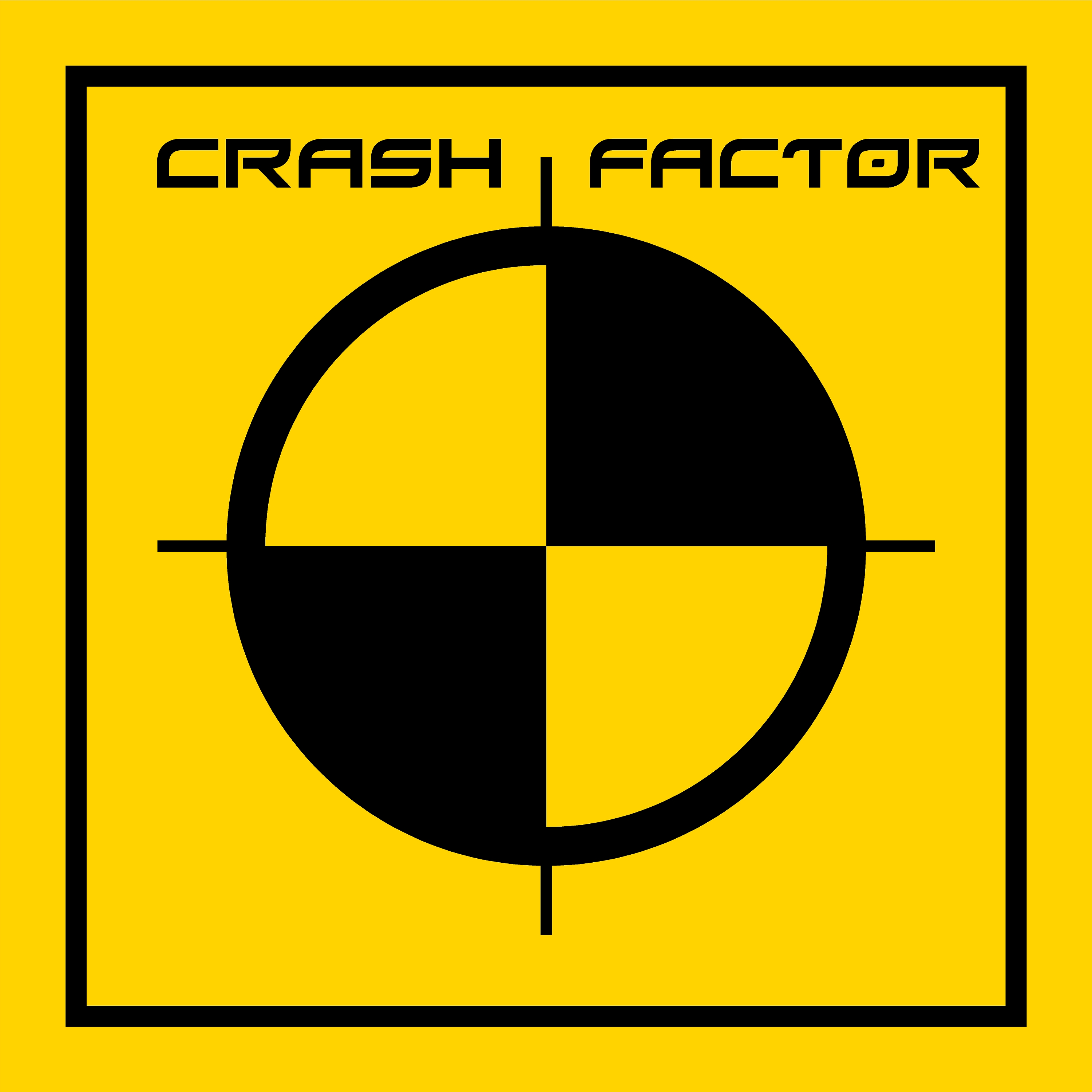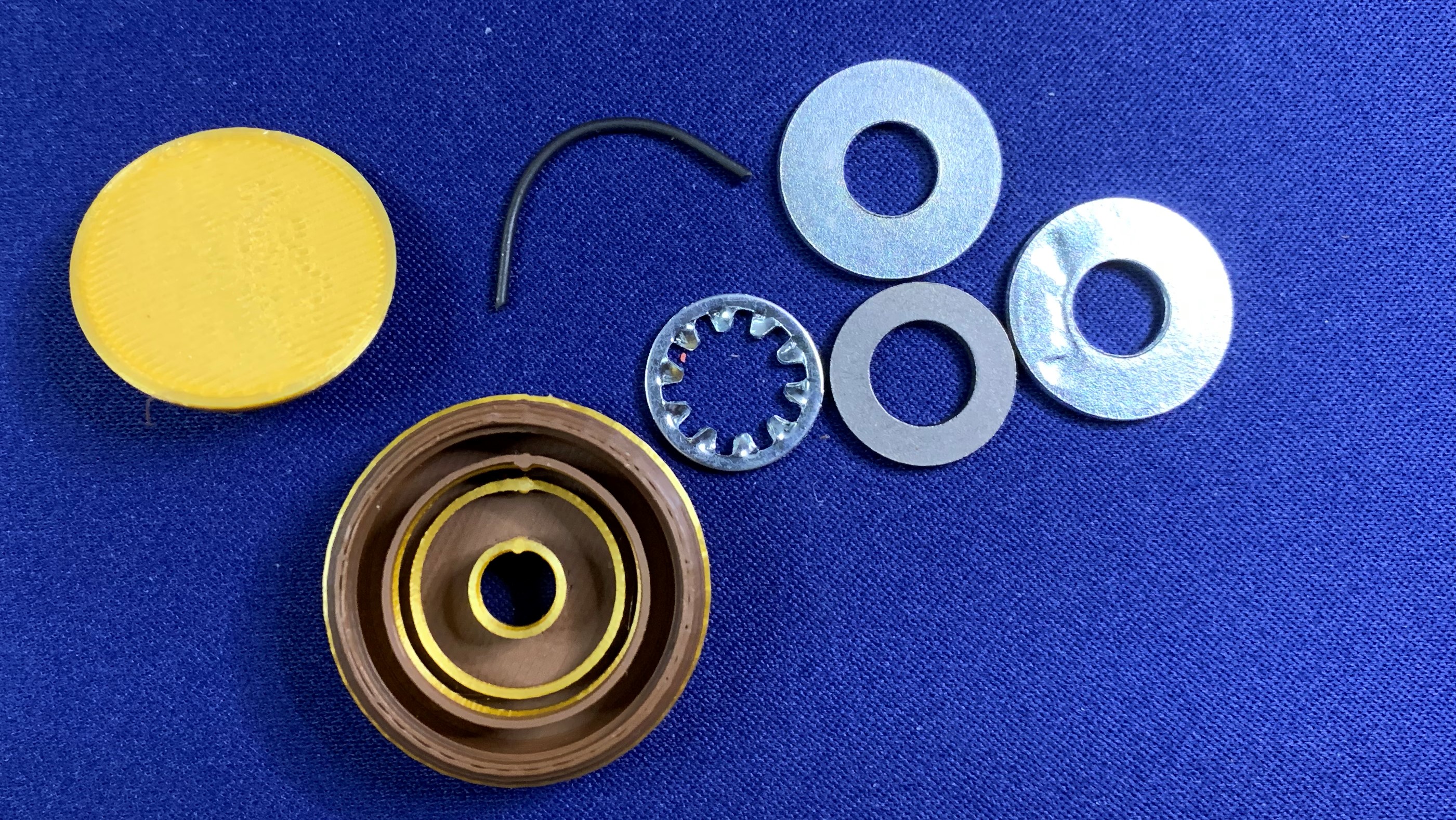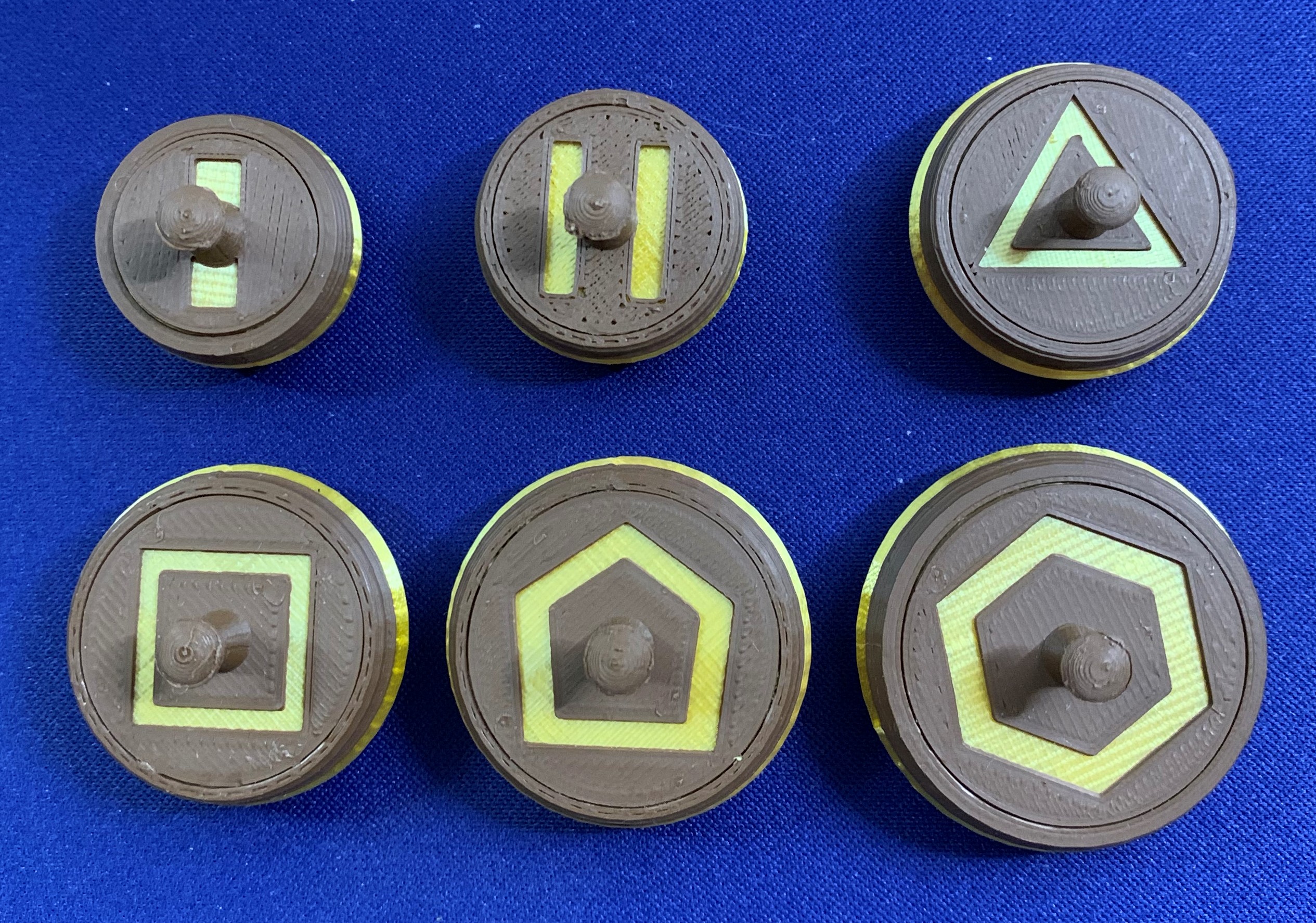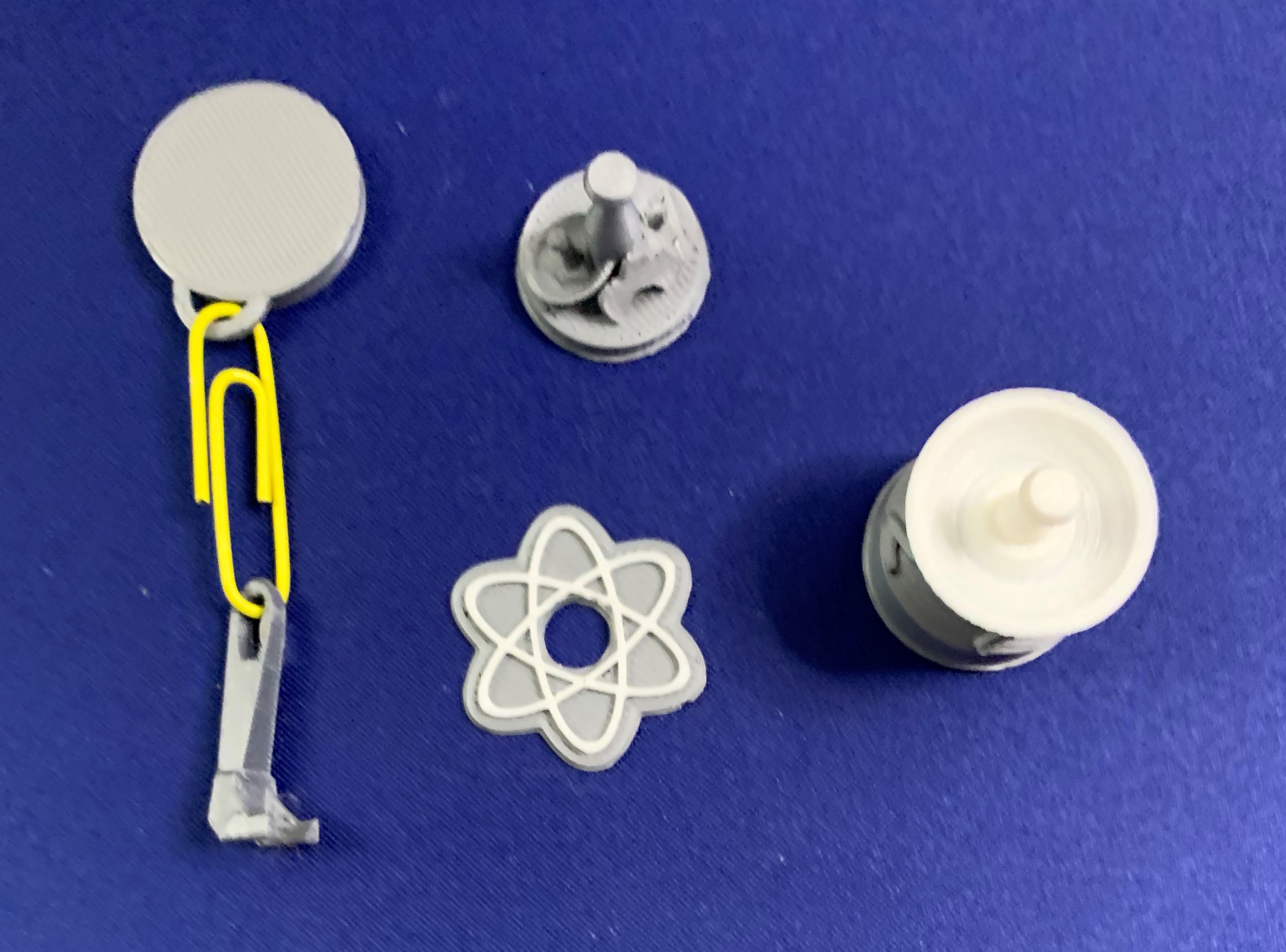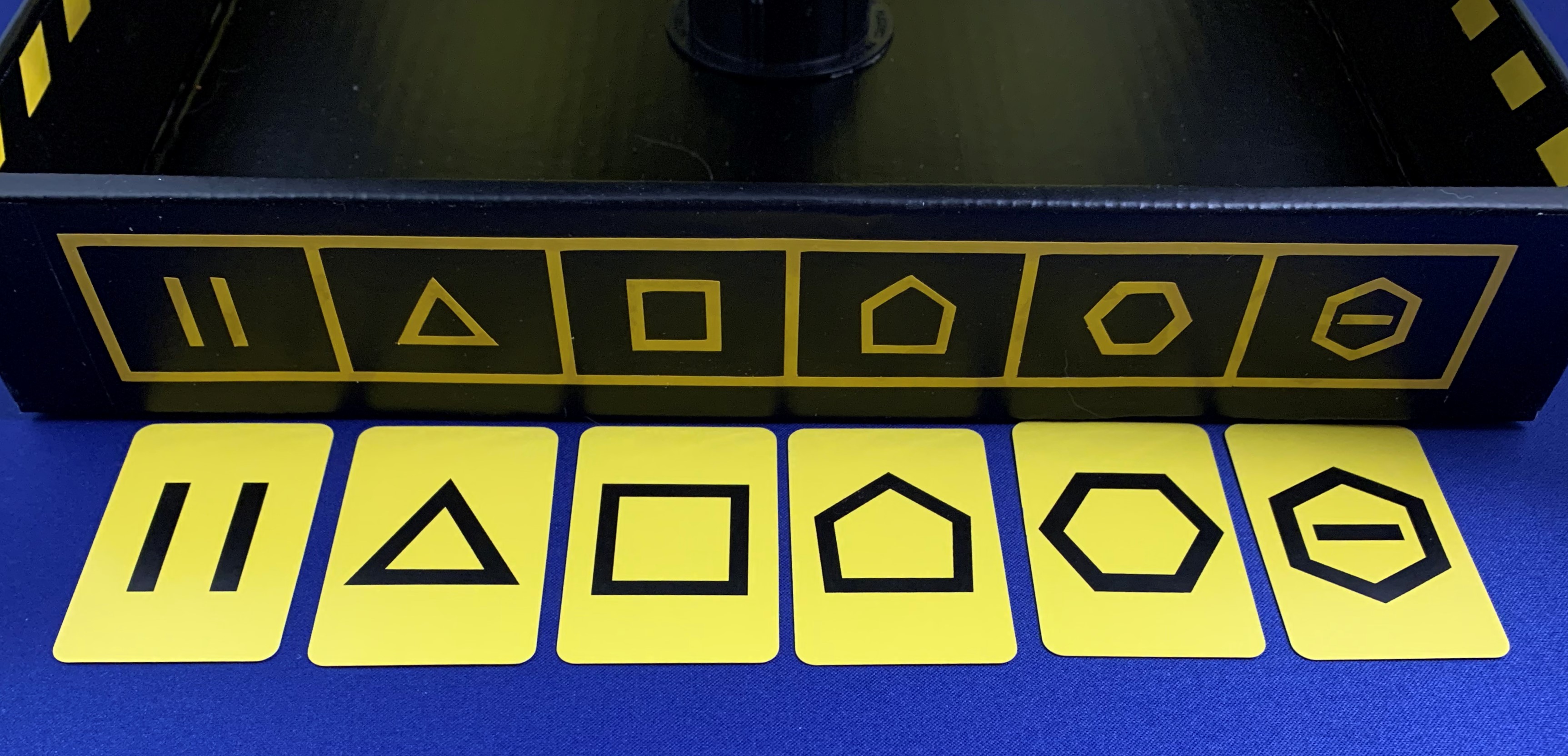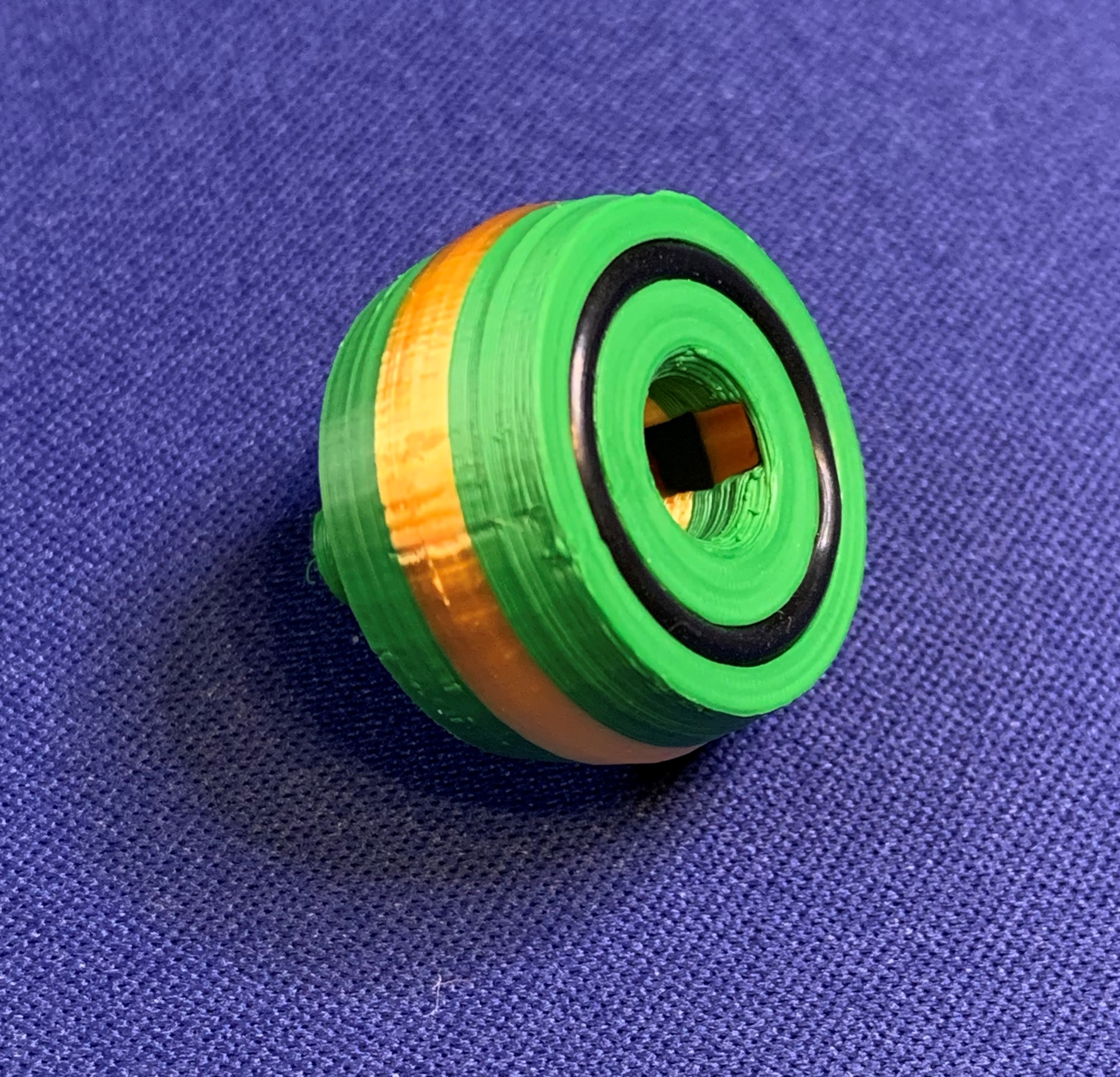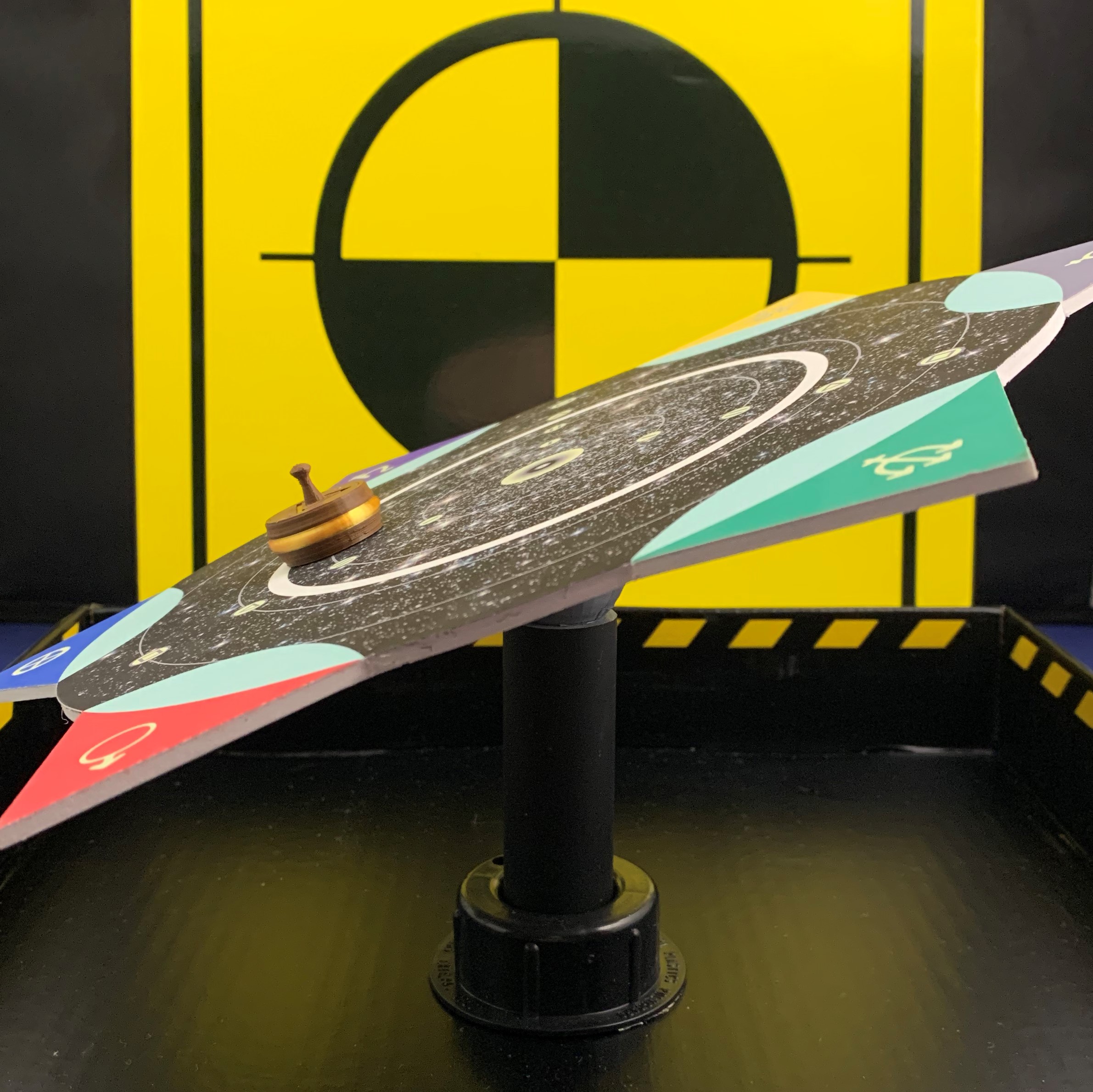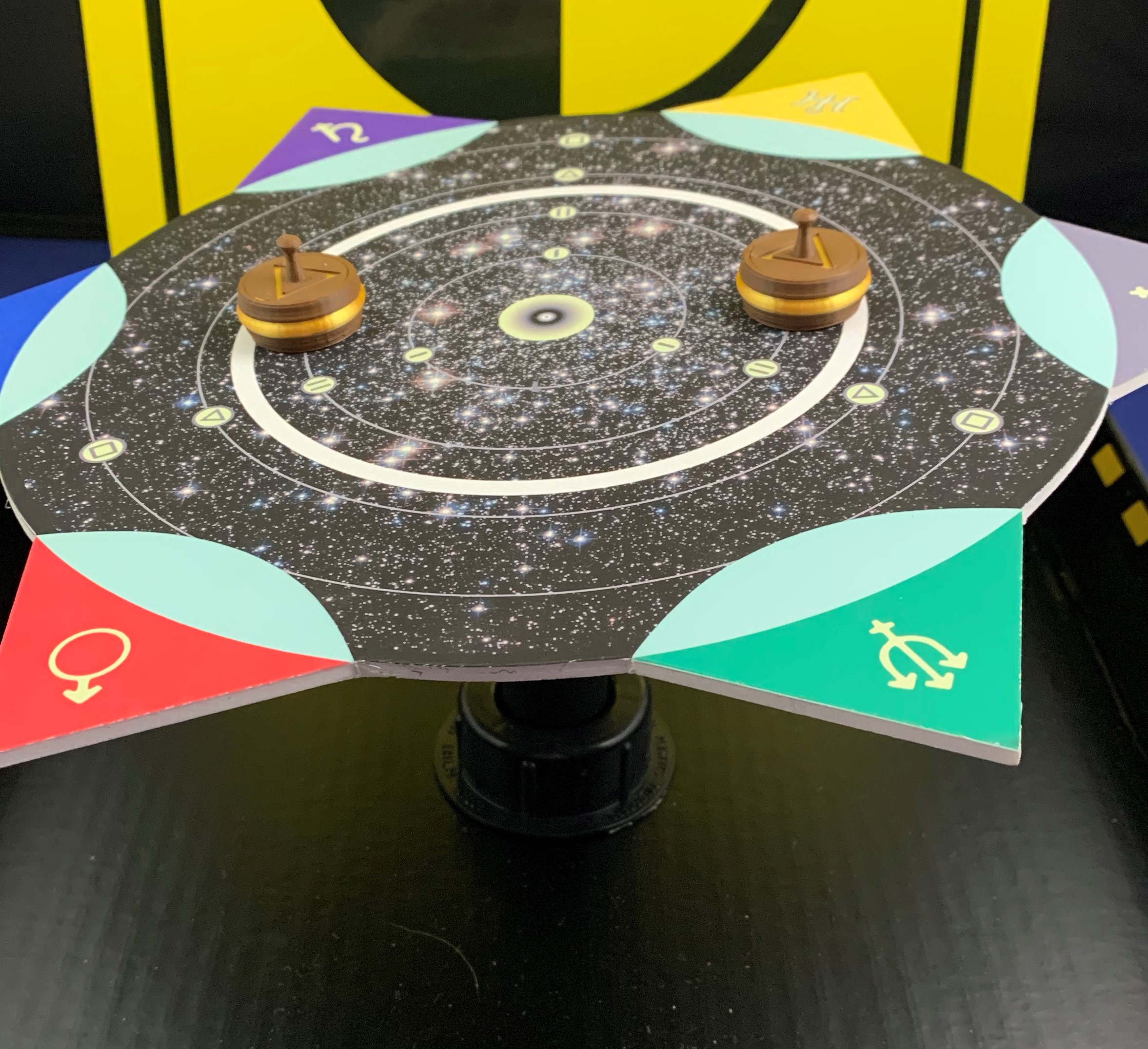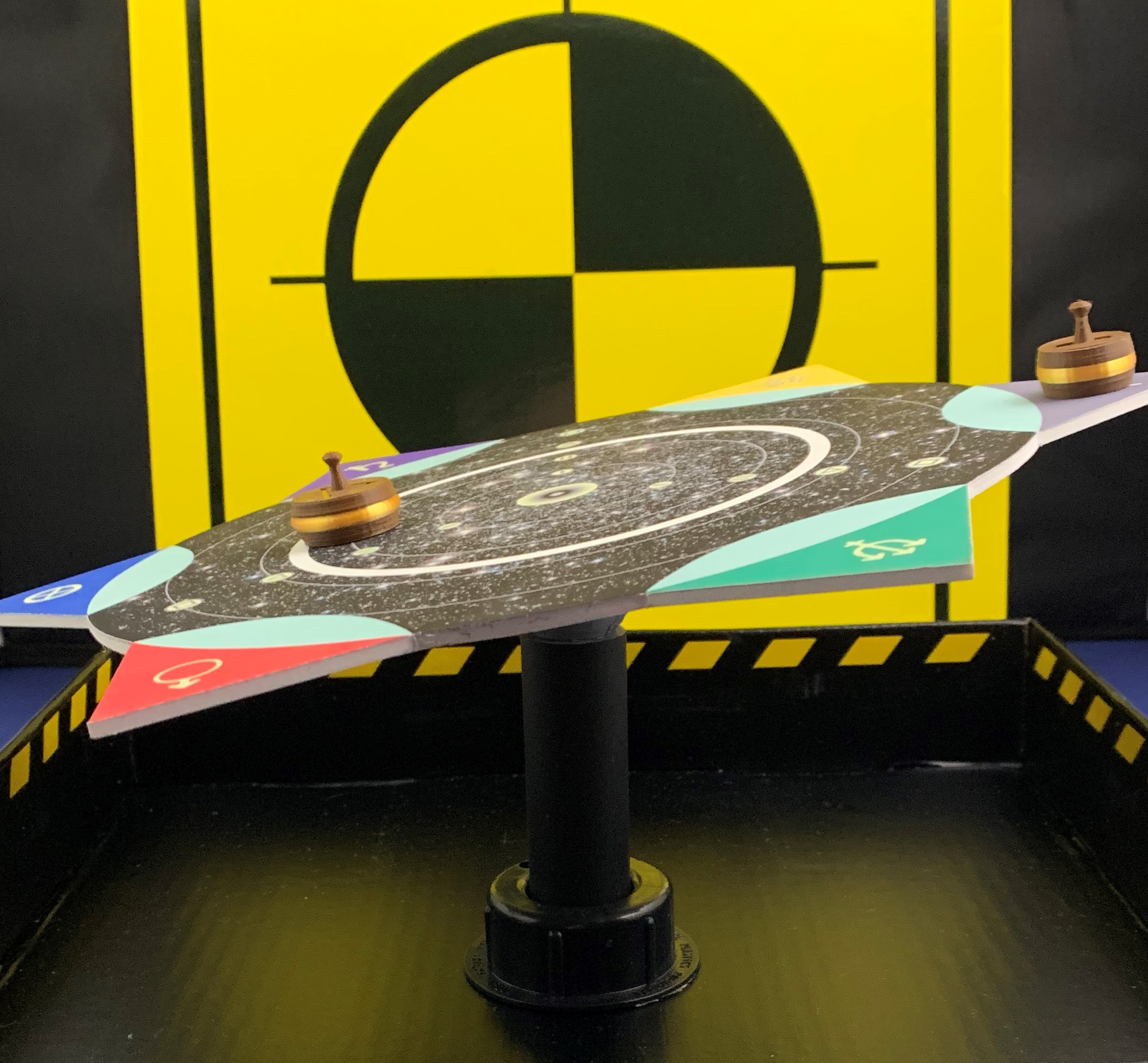Do you have both the mental strength and physical agility to dominate the galaxy?
Update: Crash Factor is now known as Exoland and is coming to Kickstarter on June 25, 2023.
| Crash Factor (2020) | |||||
| Designer(s) | Herb Stanway | Artist(s) | Herb Stanway | Publisher |
Herb Stanway |
| 2-3 | 12+ | 30-45m | |||
There are hundreds of dexterity games on the market and probably even more strategy games. Occasionally, a game will come along that merges two distinct genres of games that almost contradict each other. Crash Factor is one of those games. Crash Factor is pitched as a strategic balancing game because you are trying to conquer the galaxy by strategically placing your spaceships to either take over the most planets or be the first to deploy your entire fleet. While that may sound straightforward enough, the galaxy is very shaky and the slightest thing out of balance could tip control in favor of your opponents. Let's take a look at the components and then get into how it is played.
Box and Components
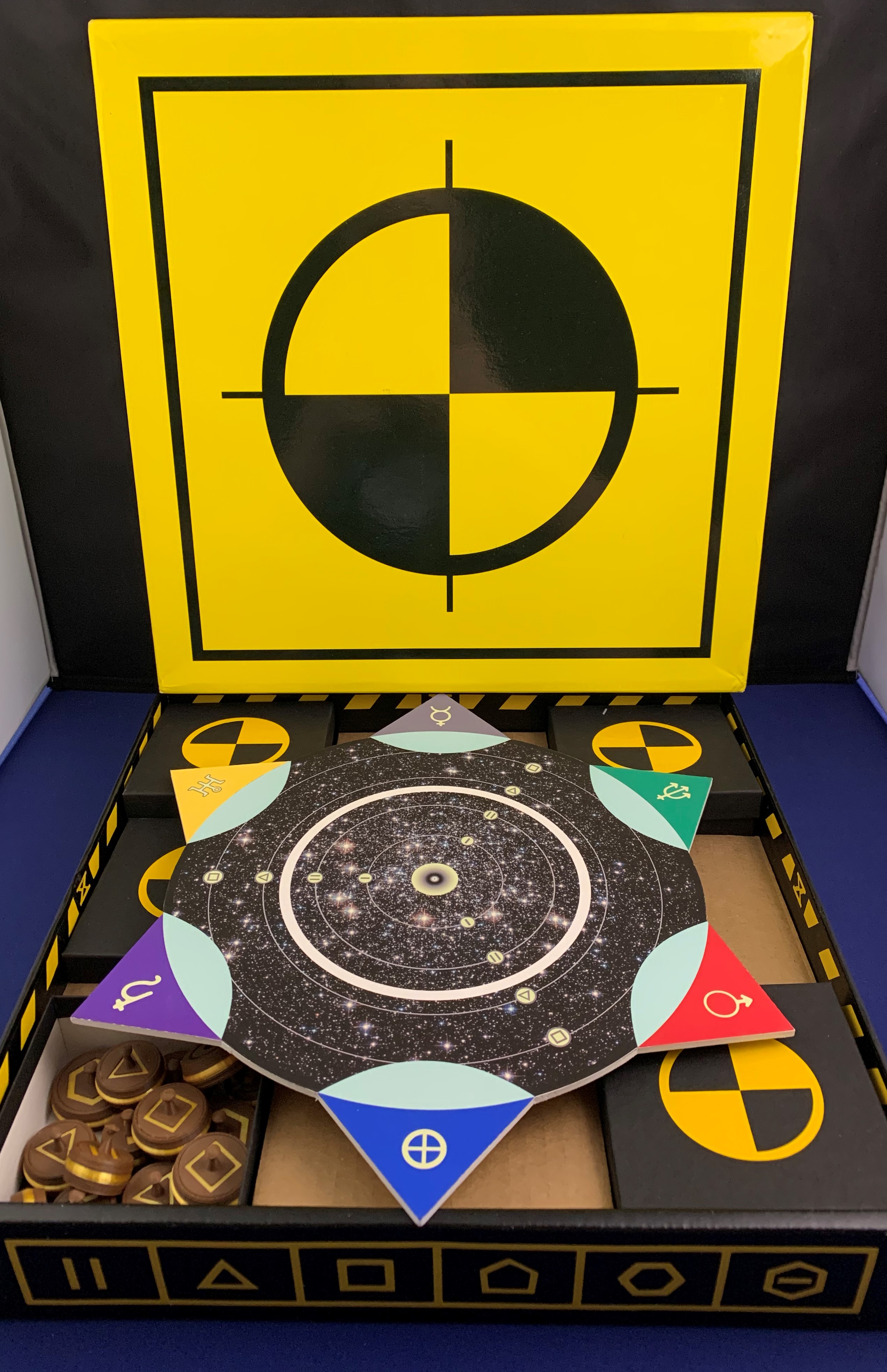 While the outside of the game may look mostly like a typical game box, once you open it, you will discover an entire galaxy! Ok, it is actually a platform that represents the Solar System. The bottom of the box is actually going to be used as part of the game (sort of like other games have done like Icecool or Paris: La Cité de la Lumière). There will be 4 boxes containing the smaller game components, the Solar System board, rules, and a cardboard spacer to keep everything neat. The components include:
While the outside of the game may look mostly like a typical game box, once you open it, you will discover an entire galaxy! Ok, it is actually a platform that represents the Solar System. The bottom of the box is actually going to be used as part of the game (sort of like other games have done like Icecool or Paris: La Cité de la Lumière). There will be 4 boxes containing the smaller game components, the Solar System board, rules, and a cardboard spacer to keep everything neat. The components include:
- Solar System Board and Fulcrum: This is the really unique center piece of the game. The Solar System board is a unique shape with numbers, lines, and planets on top. What is really interesting is how the board is used. The bottom of the board has a small square of sandpaper on it. This is the spot of the board that will be the center of gravity and will be what makes contact with fulcrum. I will go into this more during the setup explanation.
- Three colored sets of 15 Spaceships: Each player will receive a set of these spaceship and will represent their fleet they are trying to spread across the Solar System. They have varying weights from 1-6, which will be very important once we start discussing the Crash Factor Value.
- Six Unique Devices (three Anti-Gravity and three Anti-Matter): These are placed out sort of like Spaceships, but they have unique abilities that will help in your conquest.
- Six Space Junk: These are pieces you get stuck with if you make major mistakes in the game or cause the Solar System to crash.
- Two Transporters: Hopefully you didn't expect this game to be easy because you won't be using just your fingers to place pieces; these transporters will be the optional tools you may use to place your Spaceships/devices/junk onto the Solar System board. Though, they are intended to make it easier to feel the balance of the board as placing pieces.
- Three sets of Mission Cards: Each player will have a set of cards numbers 2-7. The numbers aren't traditional numbers though. They are shapes and the "number" is the number of lines on each shape. So a triangle is 3, square is 4, etc.
- Six Planet Deed Cards: If you manage to get to the orbit of a planet, you will collect the deed for that planet...unless someone else has already claimed it...if that happens, you will have to fight for the planet...sort of.
The spaceships, devices, space junk, and transporters are all 3d printed. This is currently a self-published game so the components may not be what you would expect in a mass-produced game, but I found the components to be perfectly fine. I did have two broken pieces initially that were quickly replaced; it was just the tip on the pieces that broke off. One thing that is interesting to look at since I had broken pieces were the way the spaceships were calibrated; each contain a different number/size of small washers. Because of this design, it would also be easy to print off replacements yourself if you have a 3d printer; the designer has even said he would offer the .stl files in those cases.
Mechanics
The goal of this game is to be to get rid of all of your Spaceships and space junk before your opponent OR to be the player who owns all 6 planets.
Setup 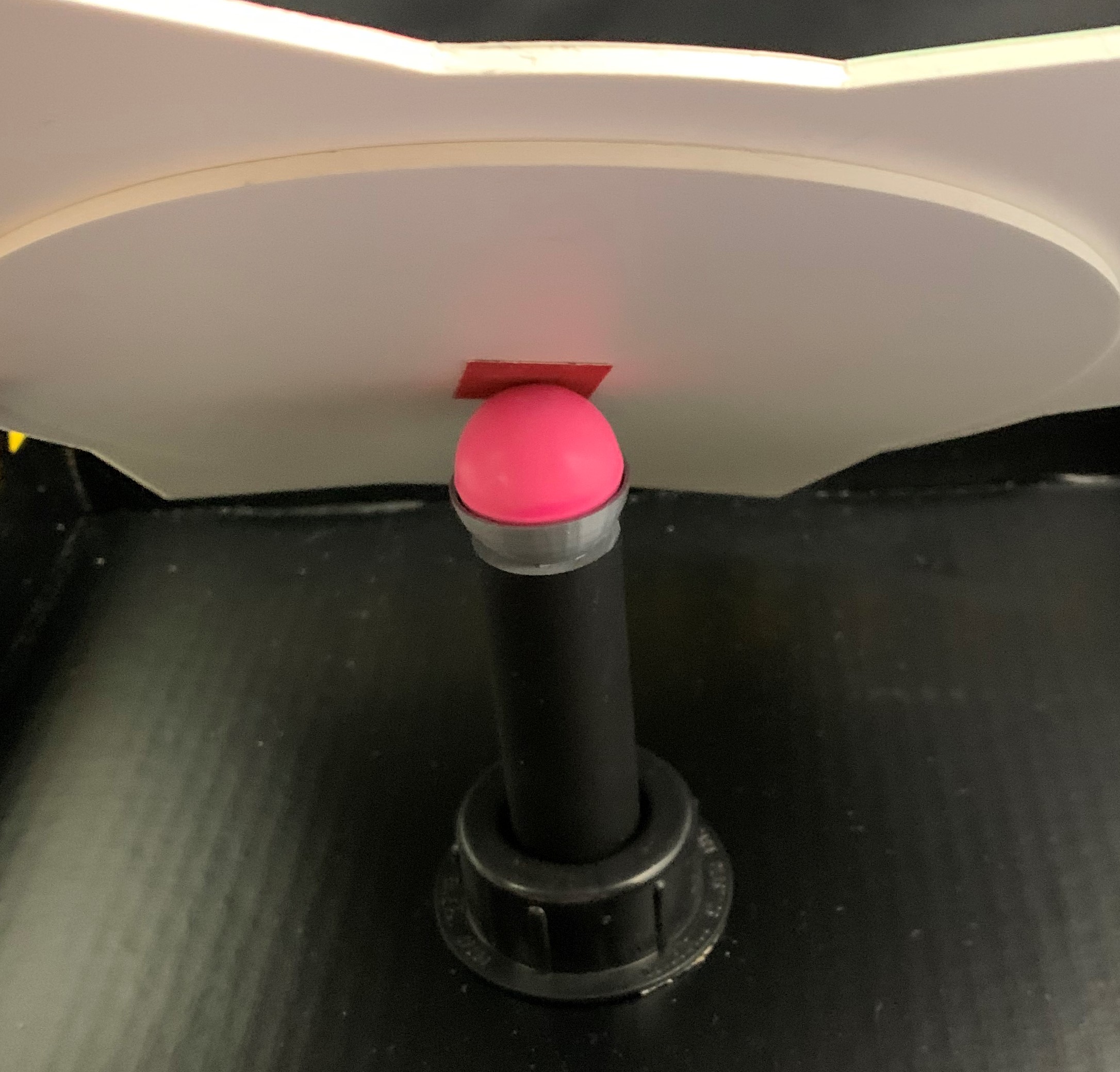
- Each player takes a set of the Mission Cards "numbered" 2-7 and all of the Spaceships of a single color.
- Each player takes a random planet Deed Card.
- The common components such as Space Junk, Deed Cards, Devices, and Transporters will be placed near the board in reach of all players; the number of devices placed out is equal to the number of players.
- Each player will shuffle their Mission Cards and flip one over; the player who reveals the highest value decides if they are the first or last player (repeat if tied).
- Reshuffle your cards face down creating your mission deck.
- The player to the right of the start player will insert the fulcrum tube into the base in the bottom of the box (Crash Tray), put the rubber ball into the top of the fulcrum tube, and place the Solar System board onto rubber ball such that the small piece of sandpaper is touching the ball. They can balance the Solar System however they prefer as long as it is stays up.
You are ready to play. Play will going clockwise around the table.
Player Turns
On a player's turn, they will decide to either take on a mission or to use one of the Play Options (Retreat, Reconfigure, and Dump).
- Take on a Mission
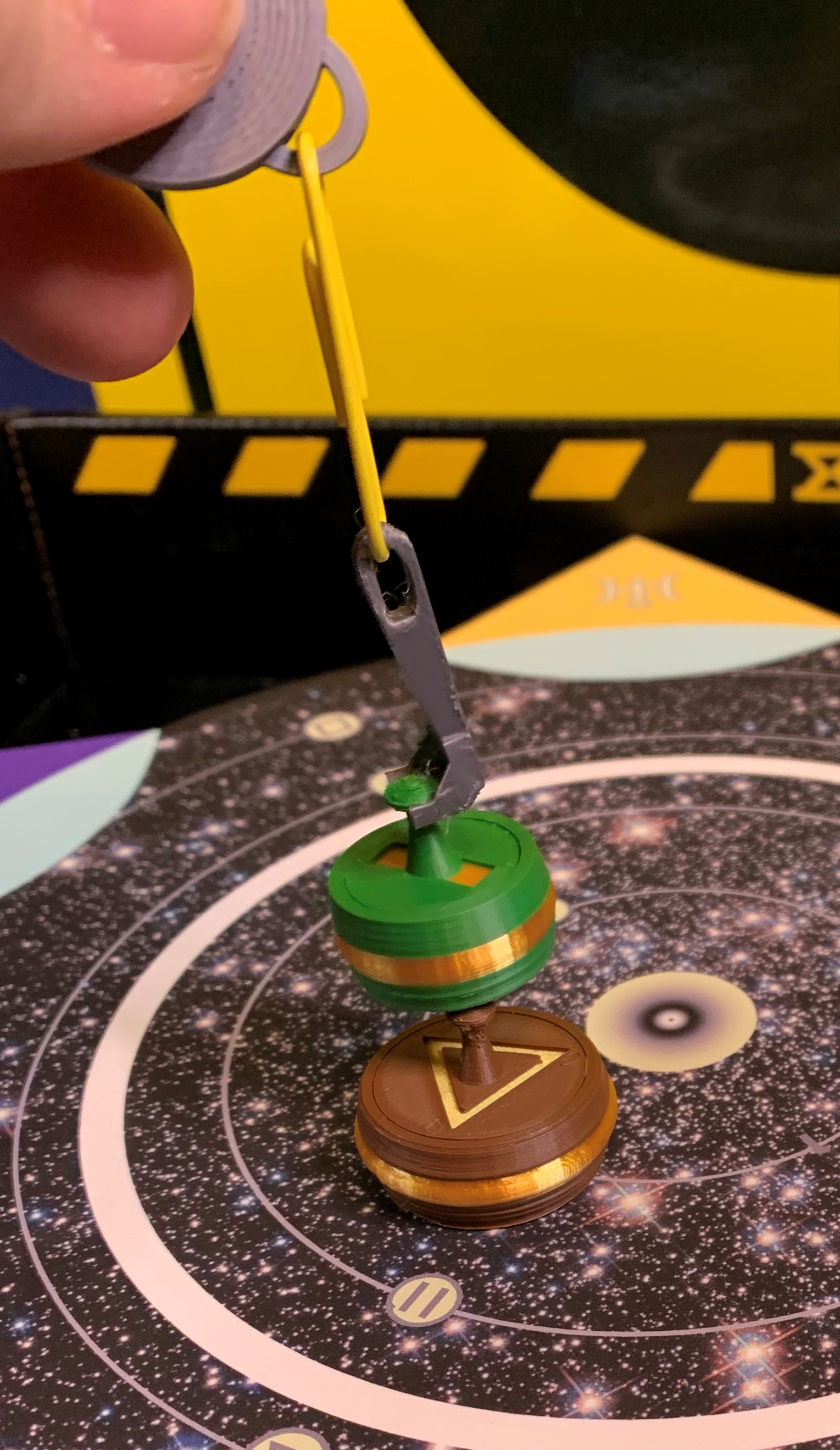
- You will flip over one of your Mission Cards from your deck. It will show you how many points worth of spaceships you must deploy on that turn. For example, if you draw a 5 Mission Card, you can deploy a single 5; a 1 and 4; or a 2 and 3.
- When deploying Spaceships, you may not move pieces already on the board. You can slide your Spaceship around to see how it tips the board, but once you let go of a piece, it may not be moved. Ideally, you will use the Transporter piece to place all of your Spaceships, Devices, and Space Junk onto the board allowing you to have a little more control over this action, but I don't believe it is required. There are two options for placing Spaceships:
- You can simply deploy a number of Spaceships onto the Solar System board in a free space.
- You can also add your Spaceships on top of an existing spaceship on the Solar System board (referred to as Docking). To do this, you simply place your Spaceship on top of another Spaceship and add the shown value of the existing Spaceship and add it to your Spaceship's value. For example, if there is a 3 Spaceship on the board and you Dock a 2 Spaceship, that is considered a 5. You can add Spaceships to stacks of Spaceships, but you only consider the top existing Spaceship for your mission total.
- Devices: Additionally, you may use a Device in your inventory anytime on your turn and provide a special perk.
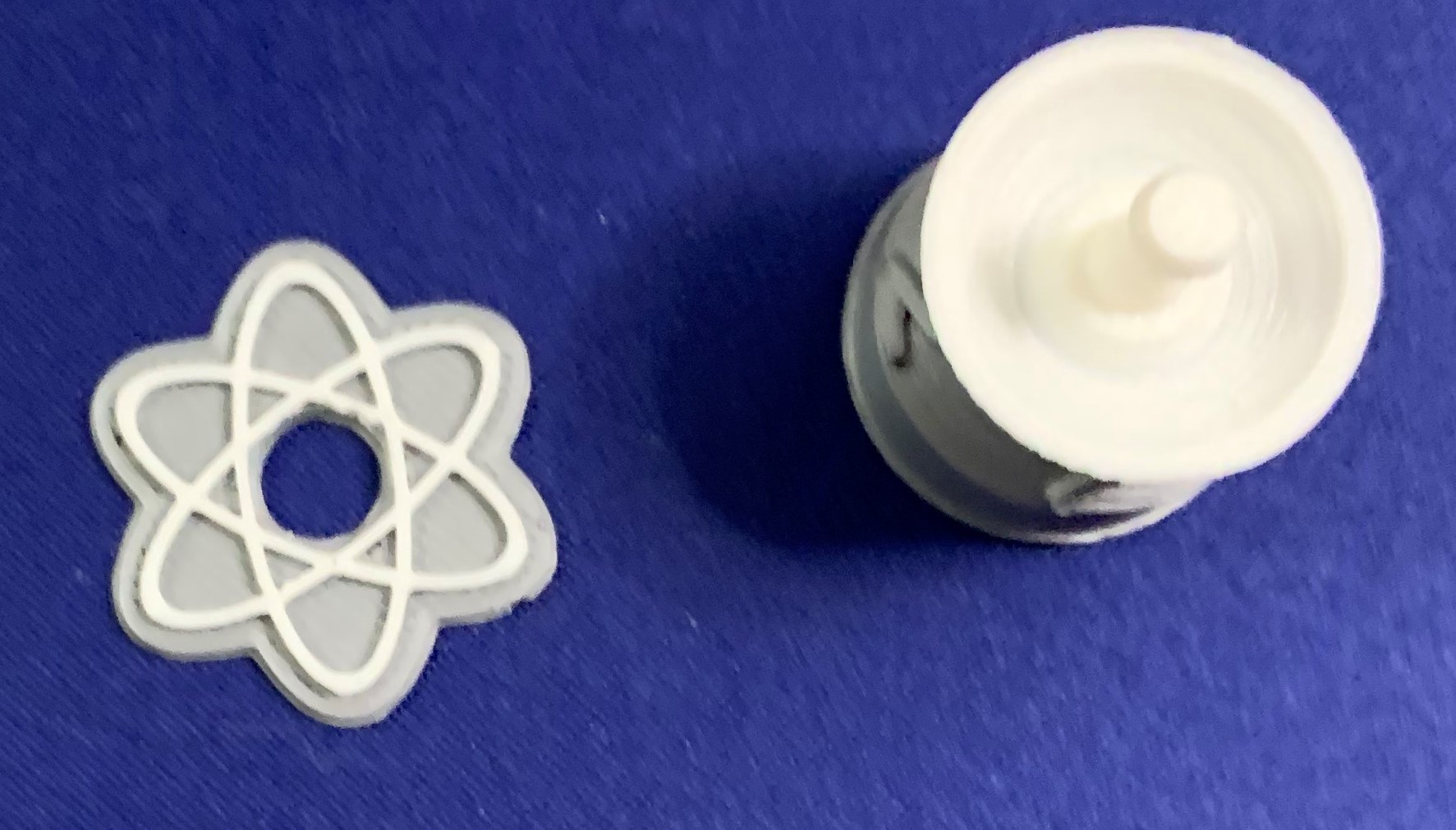 Anti-Gravity Device: It is a 2 weight device that can be used on your turn and does not count towards your Mission total. It is good to play to help balance out the Solar System for major plays.
Anti-Gravity Device: It is a 2 weight device that can be used on your turn and does not count towards your Mission total. It is good to play to help balance out the Solar System for major plays. - Anti-Matter: This can be played on any Spaceship on the Solar System board to set its value to 0. Meaning, you can then place whatever Spaceship onto that Anti-Matter, and its value is the only thing that counts towards your Mission total.
-
- Zone Rewards: The last Spaceship played during your turn (referred to as a Terminator) may activate a Zone Reward if they touch specific elements on the Solar System board.
-
- Claim a Device: If your Terminator touches the Milky Way Ring just outside of the center of the board, you may claim one of the available devices to add to your inventory.
- If you dock onto an opponent's Spaceship on the Milky Way Ring, you may steal one of their devices.
- Planet Deed: If your Terminator touches the blue Orbit above one of the planets, you may claim that Planet's Deed if currently unowned.
- Bonus Turn: If your Terminator is fully on one of the planets that you have the Deed for, you may take a bonus turn immediately.
- If you dock onto an opponent's Spaceship on their planet, you may steal that Planet Deed from that player. As an additional bonus, you can either take a bonus turn or give them one of your pieces of space junk.
- Claim a Device: If your Terminator touches the Milky Way Ring just outside of the center of the board, you may claim one of the available devices to add to your inventory.
-
- Once you finish your Mission, you will lay the Mission Card on your side of Crash Tray so you know what you have already drawn. If you have ran out of Mission Cards, collect all of your Mission Cards and shuffle them to create a new deck.
- Aborting: If you decide you do not want to place a Spaceship after already revealing a Mission Card, you lose your turn and take a piece of Space Junk from the supply instead.
- Zone Rewards: The last Spaceship played during your turn (referred to as a Terminator) may activate a Zone Reward if they touch specific elements on the Solar System board.
- Retreat
- When you retreat, you reclaim one of your Spaceships from the Solar System board or in the Crash Tray.
- Reconfigure your Fleet
- Swap out one of your available Spaceships for a combination of Spaceships in the crash tray equal to the value of the Spaceship swapped.
- Example: Turn in a 5Spaceship for a 2 and 3Spaceship.
- Dump your Space Junk
- If you have Space Junk in your inventory, you can spend your turn placing one of your Space Junk onto the Solar System board. Remember, you must get rid of all of your Spaceships or Space Junk in your inventory to trigger one of the two possible end game conditions; this is not required if you collect all of the Planet Deeds.
You can elect to draw a Mission card or choose one of the three Play Options. This will allow you to decide if it's worth risking the odds of having to ABORT a mission and getting Space Junk based on what missions you have remaining and what Spaceships there are to play with.
Solar System Crash
If at any time you cause the Solar System board to slip off causing the pieces to fall, you have caused a Solar System Crash. Your turn ends immediately. If you were placing a Spaceship that causes the crash, it remains in the Crash Tray. If you were performing a Play Option, the effects are reversed; example, if you were reconfiguring your fleet and cause the Crash, you will keep the Spaceship you were trying to swap out.
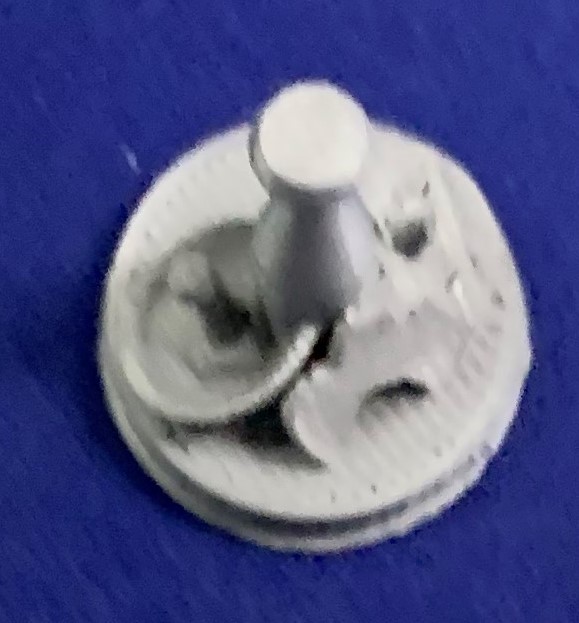 Spaceships remain in the Crash Tray, but Space Junk and Devices are removed and made available again. It is recommended that you sort the Spaceships in the tray to make future Retreat and Reconfigure actions easier.
Spaceships remain in the Crash Tray, but Space Junk and Devices are removed and made available again. It is recommended that you sort the Spaceships in the tray to make future Retreat and Reconfigure actions easier.
As a penalty, you will take one of the pieces of Space Junk.
Finally, you will rebalance the Solar System on top of the Fulcrum.
Dropping a Piece
If you have a piece fall off during your turn but does not cause a Solar System Crash, you lose your turn and take one of your Spaceships from the Crash Tray as a penalty.
End Game
If a player collects all of the Planet Deeds, that player wins immediately regardless of unused Spaceships and Junk. Otherwise, you play until one player has placed all of their Spaceship and Space Junk; once this end game condition is triggered, the round is finished out giving all players an equal number of turns. If no one else is able to place their final pieces during this time, the player who got rid of their Spaceship and Space Junk wins. The tie breaker is decided by the one who has the most Planet Deeds; if there is still a tie, whoever has the most devices wins. If there is still a tie, just play again.
Alternately, the designer has told me that if there is still a tie after deeds and devices have been compared, the tied players can face off in a Stack-Off competition. Tied players will take turns deploying their Spaceships to the Solar System board with the goal of creating the highest stack without causing the Solar System to Crash. Ships can be deployed anywhere, but only the highest stacks are counted.
Crash Factor Value (CFV)
Up to this point, I have mainly focused on the dexterity portion of the game, but there is some science built into the game to assist you in deciding the best placement of your Spaceships. This is not an required part of the game, and the game can be played like any dexterity game. However, to get the most out of what the designer envisioned for the game, this light physics lesson can help players understand their actions and plan their steps carefully.
The Crash Factor Value (CFV) is a simple formula that will help you understand the effects of placing certain value Spaceships on certain locations on the Solar System. If the CFV of a move is 10+, it is almost certain the Solar System will crash because the balance has exceeded the limits. However, that is when the Solar System is already at equal balance; if the board is already tipped due to your actions or previous player actions, you may be able to exceed on the 10 CFV with your move if placed on the opposite side allowing you to get closer to the edge of the board. Essentially, playing near the edge is riskier but offers more rewards.
On the Solar System board, there are rings with "numbers" on them called the Crash Factor Grid (CFG); these lines are essentially references that will be used to calculate the CFV. Your Spaceships each have a "weight" that is indicated by the numbers.
To calculate the CFV, you will multiply your Spaceship's value with the ring it is closest to. This will give you a rough estimate of your actions CFV.
Let's walk through an examples, if the Solar System is at balance and you place a 3 Spaceship on a 2 CFG, you have created a 6 CFV on that side. If you were to put an additional 4+ CFV of weight on that side, the Solar System would Crash. However, if you were to place a 6 CFV on the opposite side, you would return the Solar System to balance. However, you could also go almost anywhere under 14 CFV on the opposite side without causing a Crash, which could allow you to claim a Planet's Deed or gain a bonus turn.
Final Thoughts
This is a truly unique game. Amanda and I approached the game from very different perspectives. She played it mostly like a dexterity game, and I was mathing everything out. Neither approach we found was wrong. Initially, I had the advantage because I took slightly less risky moves because I had a rough idea where I could safely place my Spaceships, but once you have played enough, you get a natural feel for where to place Spaceships without needing to overthink the numbers. We both had a lot of fun trying different things as we learned the game.
The concept and setup of this game is really intriguing because of how well it all works. The combination of the rubber ball and the bit of sandpaper creates friction to help prevent the board from sliding off of the fulcrum until it has reached a specific threshold, which is all calculated and provided in the form of the Crash Factor Value. The math is easy to understand and shouldn't be a problem for most since the highest multiple you really need to know is 6 x 4, and even the math fades away after a while of playing. It isn't that the math is less important though; it is that you simply have become subconsciously aware of the outcome of most of the actions from trial and error. It is a really neat physics game as it is teaching while you are having fun.
As I said earlier, this game is currently self-published, and the quality may not be what you would expect from a mass-produced game. However, I found the game to be a lot of fun, and the components were perfectly fine for us. The designer is hoping to partner with a publisher at some point to be able to mass produce copies of the game and will likely have polished components. Currently, the specific version of the game that I have is sold out, but the designer has told me a new version will be coming out this spring that supports up to 4 players. If you found this game to be interesting and something you may enjoy, check out his website and give his Facebook page a like so you will be notified as new information comes out about future copies of the game and more. 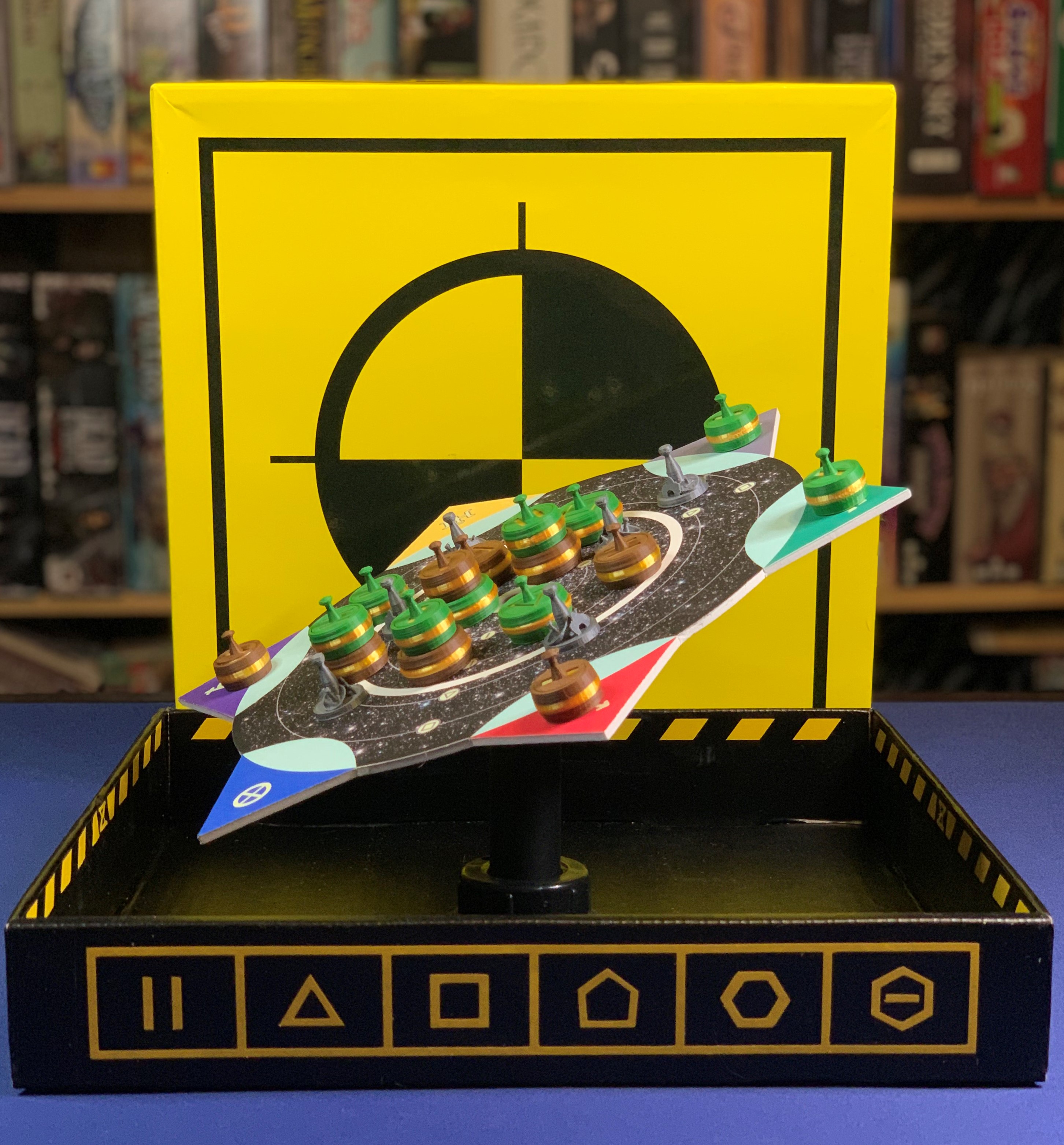
Links/Media
Crash Factor Board Game Geek Page
Disclosure
We received the product in order to write an honest review; all reviews reflect the honest opinions of the writer.

